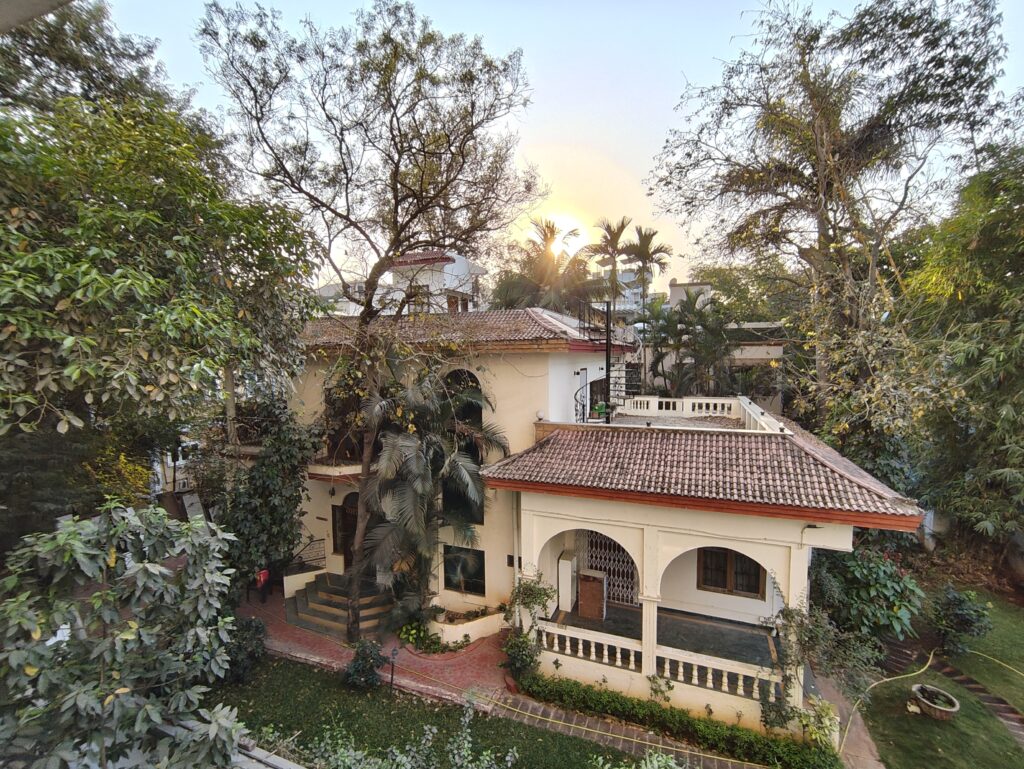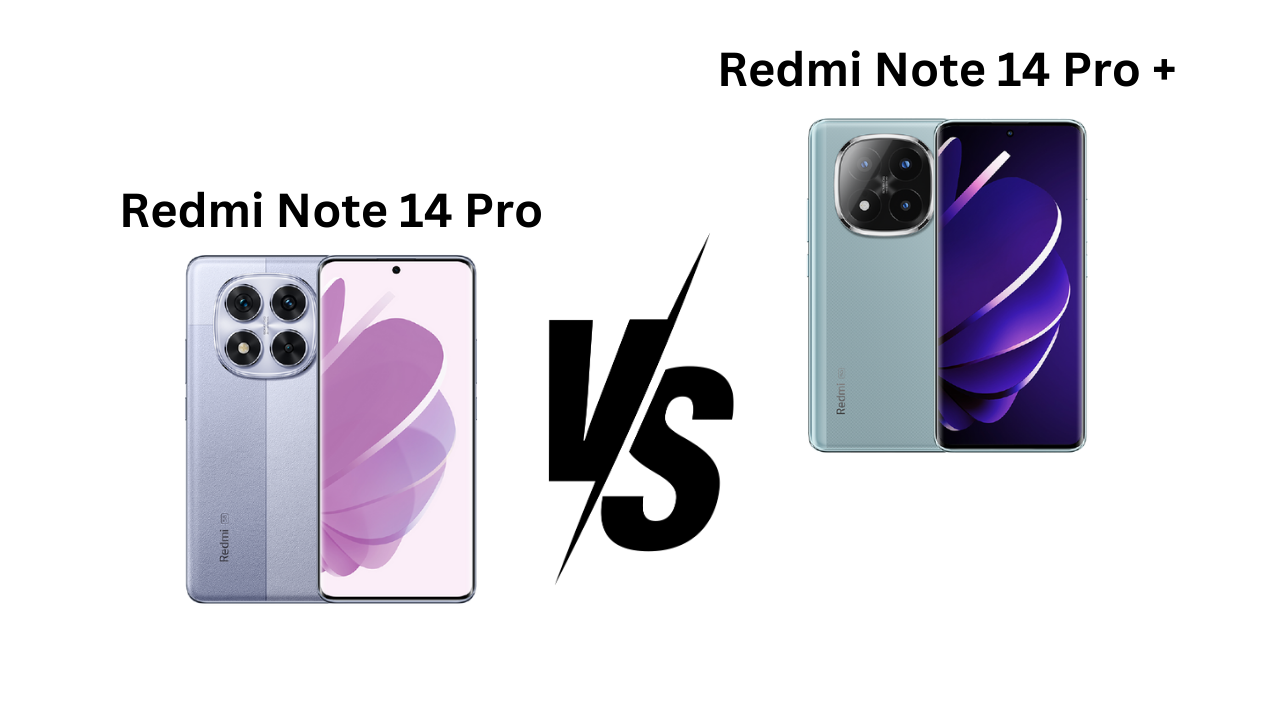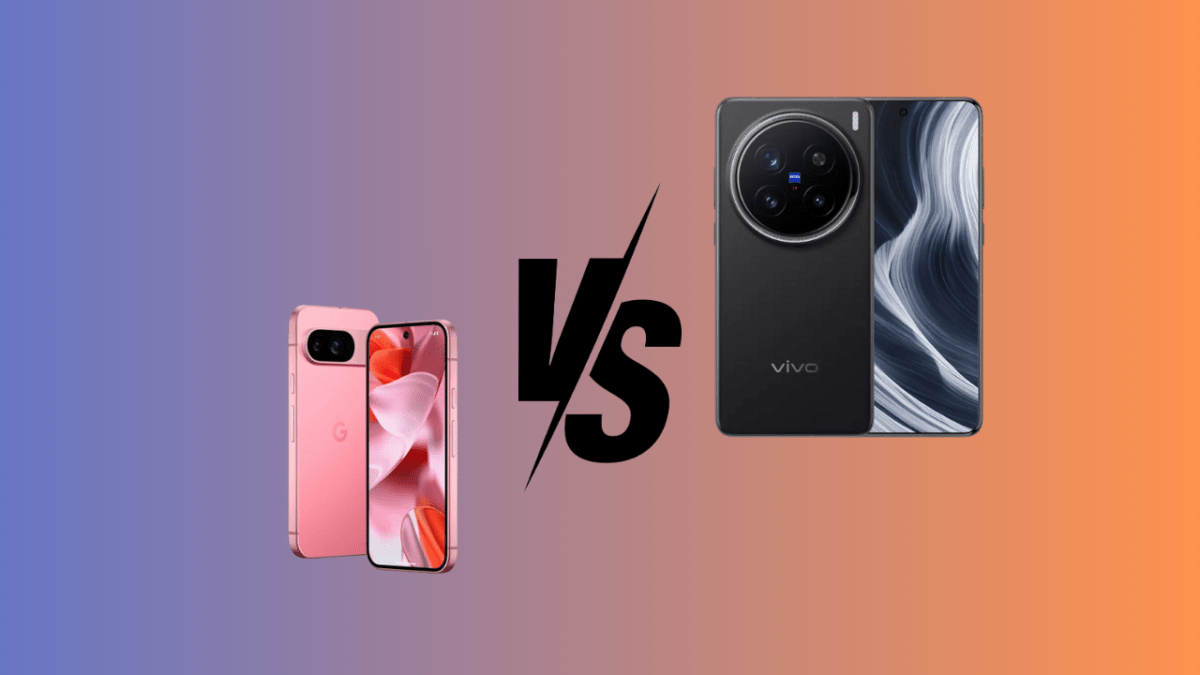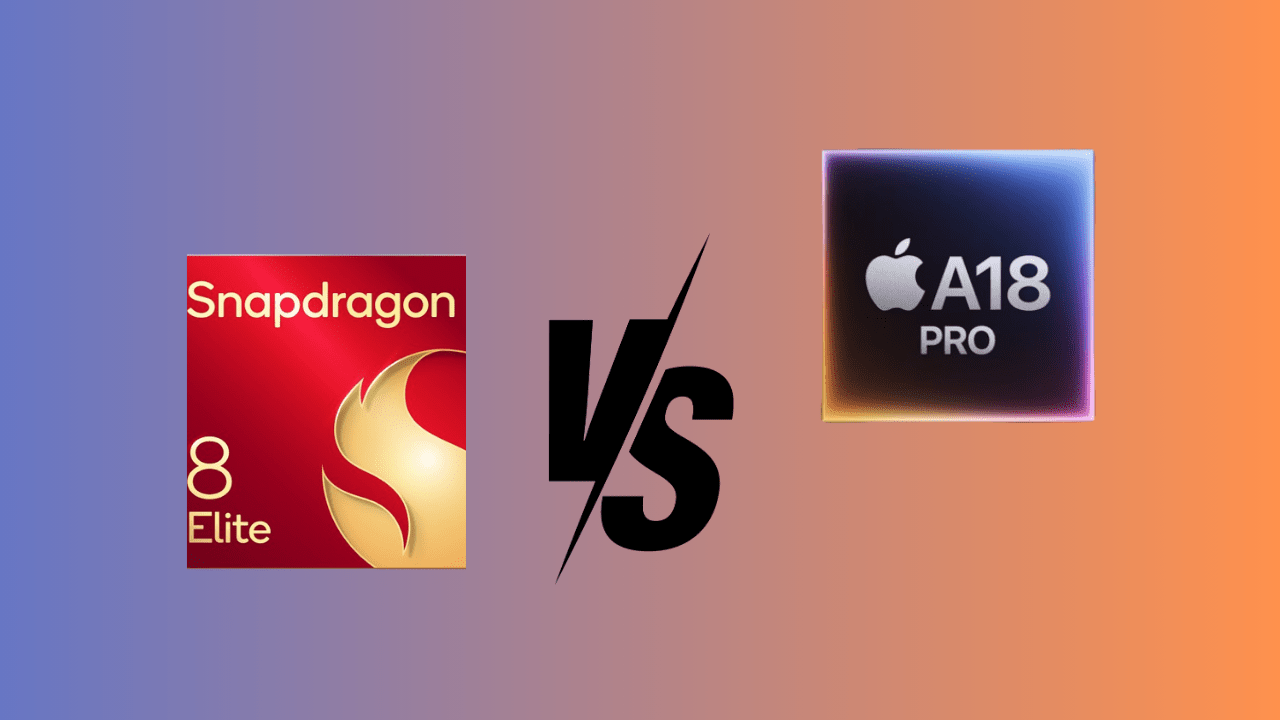We have plenty of options under ₹25,000, including the Nothing Phone 3a, Motorola Edge 60 Fusion, and many others. In the coming weeks or even in early 2025, we might see new phones launching in this segment with even more powerful processors, specifically targeting high-performance users.
However, in this blog, we’re focusing on the Nothing Phone 3a and Motorola Edge 60 Fusion, because while both devices have their set of cons, they also come with strong, standout pros. So let’s dive in and help you figure out which phone suits your needs better based on their strengths and weaknesses.
Design
When comparing the design of the Nothing Phone 3a and the Motorola Edge 60 Fusion, both phones bring a unique flair to the table, but cater to slightly different tastes.
The Nothing Phone 3a retains the brand’s signature transparent Glyph lighting, though this time it’s limited to the camera module area, unlike the full-back coverage seen in the Number Series. It opts for a hard plastic build instead of glass, keeping the look similar to the Phone 2a but with a more budget-conscious material choice.
It includes three camera sensors, a power button on the right, volume buttons on the left, and an extra Essential Button whose function is yet to be detailed. It also carries an IP64 rating, making it splash-resistant.
On the other hand, the Motorola Edge 60 Fusion exudes a more premium feel with its leather back and hard plastic frame. Motorola has chosen a different leather texture this time, offering an enhanced in-hand experience. The triple-lens camera module, inspired by the Edge 50 Pro, sits flush into the slim body, adding to the device’s elegant profile. With IP68 and IP69 certifications, along with military-grade durability, the Edge 60 Fusion is clearly built to withstand tougher conditions.
In summary, while the Nothing Phone 3a emphasizes a futuristic and iconic design language with its Glyph interface and minimalist aesthetics, the Motorola Edge 60 Fusion focuses on a luxurious, durable, and refined build—making it a strong contender for users who value both style and toughness.
Display
Nothing Phone 3a features a 6.67-inch Full HD+ AMOLED punch-hole display with a 120Hz refresh rate and thin bezels, offering a clean and immersive viewing experience. It supports HDR10+, has 10-bit color depth, and reaches a peak brightness of 3000 nits (1300 nits in High Brightness Mode). The display is protected by Panda Glass and includes an optical in-display fingerprint sensor. HDR content is supported on YouTube and Netflix.
Motorola Edge 60 Fusion comes with a slightly larger 6.7-inch 1.5K curved AMOLED display that also supports a 120Hz refresh rate. It features a 10-bit panel with richer color accuracy and HDR+ support on YouTube and Netflix. It stands out with a peak brightness of 4500 nits, HDB of 14,000 nits, and SGS-certified eye protection. For durability, it uses Corning Gorilla Glass 7i.
A highlight of the Motorola’s display is Water Touch 3.0, allowing smooth touchscreen usage even when the screen is wet, making it especially useful for rainy or sweaty conditions.
While both displays are impressive, the Motorola Edge 60 Fusion edges ahead with its higher brightness, curved 1.5K resolution, and water-resistant touch technology, offering a slightly more premium viewing and usability experience.
Performance
When it comes to performance, both phones cater well to everyday users but have different strengths and limitations.
The Motorola Edge 60 Fusion is powered by the MediaTek Dimensity 7400 chipset, paired with UFS 3.1 storage and LPDDR5 RAM. This combination ensures fast app launches and smooth multitasking in daily use. However, the phone tends to struggle with CPU-intensive tasks and heavy gaming, often leading to overheating and performance throttling. It’s suitable for casual users, but not the best choice for demanding workflows or extended gaming sessions.
On the other hand, the Nothing Phone 3a runs on the Snapdragon 7s Gen 3 (4nm) processor—also seen in the OnePlus Nord 4—offering a reliable and efficient performance profile. It features UFS 2.2 storage and LPDDR4X RAM, with an Antutu score of 820,157, indicating solid mid-range capabilities. While it isn’t built for high-end gaming either, it handles day-to-day tasks and casual games smoothly, delivering stable FPS in most scenarios without major heating issues.
Verdict: For users prioritizing daily performance and efficiency, the Nothing Phone 3a has the edge with its cooler and more balanced performance. However, if faster storage and RAM speeds are more important for your workflow, the Motorola Edge 60 Fusion might appeal—just keep in mind its thermal limitations under load.
Software and UI
One of the standout features of the Motorola Edge 60 Fusion is its Android One operating system. It delivers a clean, minimal, and bloat-free interface, ideal for users who appreciate simplicity and stock Android aesthetics. The device boots with Android 15 right out of the box, which is a plus. However, there’s a catch—Motorola is often slow with updates. Even though the company promises 3 years of major Android upgrades and 4 years of security patches, delays in rollout are a common complaint among users.
Switching over to the Nothing Phone 3a, the software experience feels much more polished and unique. It runs on Nothing OS 3.1, based on Android 15, blending stock Android with Nothing’s signature design elements, such as the Glyph interface and minimalist icons. While the OS had its fair share of early bugs, recent updates have brought noticeable improvements in stability and overall smoothness. On the update front, Nothing matches Motorola’s commitment—3 years of major Android updates and 4 years of security patches—but with quicker and more consistent delivery.
What sets them apart? Motorola offers a pure Android feel with fewer tweaks, but the update delays can sour the experience. Nothing, on the other hand, brings a more visually striking interface, regular feature enhancements, and faster updates, making it more appealing to users who enjoy a clean yet modern and evolving UI.
Final thoughts: If you’re after timely software support with a refreshing design twist, the Nothing Phone 3a takes the crown. But if you’re a fan of classic Android simplicity and can wait a bit longer for updates, the Motorola Edge 60 Fusion won’t disappoint.
Camera
When it comes to smartphone photography in the sub-₹25,000 segment, Nothing Phone 3a and Motorola Edge 60 Fusion bring two distinct philosophies to the table.
| Feature | Nothing Phone 3a | Motorola Edge 60 Fusion |
|---|---|---|
| Primary Camera | 50MP ƒ/1.9 (Wide), 24mm, 1/1.57″, 1.0µm, OIS, PDAF, 84.5° FOV | 50MP ƒ/1.9 (Wide), Sony LYT700C, OIS, PDAF |
| Secondary Camera | 50MP ƒ/2 (Telephoto), 2x Optical Zoom, 1/2.74″, 0.64µm, PDAF, 49.5° FOV | 13MP ƒ/2.2 (Ultra-Wide + Macro) |
| Tertiary Camera | 8MP ƒ/2.2 (Ultra-Wide), 120° FOV, 1/4.0″, 1.12µm | – |
| Zoom Features | 2x Optical Zoom, 4x In-Sensor Zoom, 30x Ultra Zoom | Digital Zoom only |
| Video (Rear) | 4K @ 30fps, 1080p @ 30/60fps | 4K @ 30fps, 1080p @ 30fps |
| Front Camera | 32MP ƒ/2.2, 22mm, 1/3.44″, Screen Flash | 32MP ƒ/2.5, Screen Flash |
| Front Video | 1080p @ 30fps | 1080p @ 30fps, 4K supported |
| Other Features | Auto Focus, LED Flash, HDR, Punch-Hole, Screen Flash | Sony LYT700 sensor, Pantone-certified color accuracy, Auto Focus, LED Flash |
With its triple-camera setup, the Nothing Phone 3a sets a high bar in this category. It features a dedicated telephoto lens—a rare addition at this price point—offering 2x optical zoom and up to 30x ultra zoom. The result? Impressive long-distance shots without compromising on detail. The main 50MP sensor captures natural, true-to-scene images with a high dynamic range, and its ultra-wide lens delivers crisp, distortion-free landscapes.
Content creators will also appreciate its 4K video recording capabilities combined with optical image stabilization (OIS), which ensure steady, vivid footage in various lighting conditions. Overall, it’s a versatile camera phone ideal for both photography enthusiasts and casual users looking for quality without breaking the bank.
On the flip side, the Motorola Edge 60 Fusion takes a more refined, color-accurate approach. The primary 50MP shooter is equipped with a Pantone-validated Sony LYT700C sensor, delivering true-to-life tones with impressive clarity. This makes it a top pick for those who prefer authentic color reproduction over saturated visuals.
Its 13MP ultra-wide lens doubles as a macro camera, offering flexibility for both expansive and close-up shots. The 32MP front camera is no slouch either, supporting 4K video recording—a rare feature even in more premium phones.
However, it’s not without its compromises. Portrait mode lacks depth, and night photography falls slightly short compared to rivals. Video performance is decent but could benefit from better stabilization features.
If you’re after camera versatility, zoom capabilities, and video stability, the Nothing Phone 3a clearly leads the race.
But if your focus is on natural color output and everyday reliability, the Motorola Edge 60 Fusion makes a compelling case with its Pantone-certified sensor and clean image processing.






Battery
When it comes to battery life and charging speeds, both the Motorola Edge 60 Fusion and the Nothing Phone 3a bring their own strengths to the table, but in very different styles.
The Edge 60 Fusion packs a larger 5500mAh battery, which comfortably supports a full day of usage even under moderate to heavy load be it video streaming, browsing, or casual gaming. Complementing this endurance is the blazing-fast 68W charging support, a real boon for users who are always on the move. But there’s a trade-off while the charging speeds are impressive, the phone does tend to heat up during summer sessions, especially if you’re topping up in a warm environment.
On the flip side, the Nothing Phone 3a opts for a slightly more balanced approach. Its 5000mAh battery may be smaller on paper, but in real-world use, it performs admirably, providing a full day of reliable usage. Where it stands out is its 50W fast charging support, which finds a sweet middle ground between speed and thermal control fast enough to be convenient, yet subtle enough to keep things cool.
However, staying true to Nothing’s minimalist and eco-conscious philosophy, the company skips the in-box charger, nudging users to reuse existing chargers or invest in a new one. While this may be slightly inconvenient, it complements the brand’s clean, clutter-free approach.
So, whether you prefer Motorola’s raw power with super-fast charging (and the occasional heat) or Nothing’s thoughtful balance of efficiency and minimalism, both phones cater well to their target users it’s just a matter of choosing what matters more to you: speed or simplicity.So, whether you prefer Motorola’s raw power with super-fast charging (and the occasional heat) or Nothing’s thoughtful balance of efficiency and minimalism, both phones cater well to their target users—it’s just a matter of choosing what matters more to you: speed or simplicity.
Smart Add-ons: Functionality vs Intelligence
Both the Phone 3a and the Motorola Edge 60 Fusion bring some extra software tricks to the table but their approaches couldn’t be more different. Nothing opts for practicality and ease of use with its thoughtfully designed Essential Button, a physical shortcut that goes beyond the ordinary. With just a press, it captures a screenshot and instantly lets you annotate it with notes or even voice memos. These enhanced screenshots are then saved in the dedicated Essential App, not your regular photo gallery, keeping your creative or work-related clippings neatly organized. It’s a small touch, but one that adds real productivity value especially for users who frequently take and share quick visual notes.
Motorola, on the other hand, dives into the AI space with its suite of Moto AI features an effort to modernize the user experience with smart tools. From automatic image enhancement and an AI-powered eraser to adaptive video stabilization and language translation, the features sound promising on paper. However, their impact in day-to-day use is a bit hit or miss. While some users may find these tools helpful in specific moments, they don’t exactly redefine the smartphone experience and often end up tucked away in the settings, used occasionally rather than regularly.
In the end, it comes down to what kind of smart you’re looking for: the Nothing Phone 3a delivers simplicity and utility in a single, easy-to-access button, while the Motorola Edge 60 Fusion takes a more tech-forward approach with AI-driven tools that, while clever, may not see daily action. Both are thoughtful additions it just depends on your style of use.
Price
| Smartphone | RAM + Storage | Price (₹) | Color Options | Buy Link |
|---|---|---|---|---|
| Nothing Phone 3a | 8GB + 128GB | ₹24,999 | Black, White, Blue | Buy Here |
| 8GB + 256GB | ₹26,999 | Black, White, Blue | Buy Here | |
| Motorola Edge 60 Fusion | 12GB + 256GB | ₹25,999 / $350 | Green | Buy Now |
Conclusion
If your top priority is camera performance, the Phone 3a clearly steals the spotlight with its flagship-level triple-camera setup, including a dedicated telephoto lens and advanced zoom capabilities features rarely seen under ₹25,000. Combined with its clean design, balanced software experience, and unique touches like the Essential Button, it’s a solid choice for those who value creativity, aesthetics, and real-world camera performance.
On the other hand, the Motorola Edge 60 Fusion leans more towards users who prefer stock Android, better RAM capacity, and a larger battery with blazing-fast charging. Its Pantone-validated camera sensor and Moto AI features make it a great fit for users who value color accuracy, clean UI, and day-to-day reliability.
Both phones bring their A-game, but your final choice depends on what you value more: the Phone 3a is a better all-rounder for camera and innovation lovers, while the Motorola Edge 60 Fusion is ideal for power users looking for smooth performance and a clutter-free experience.
Thank You so much to read!!!




